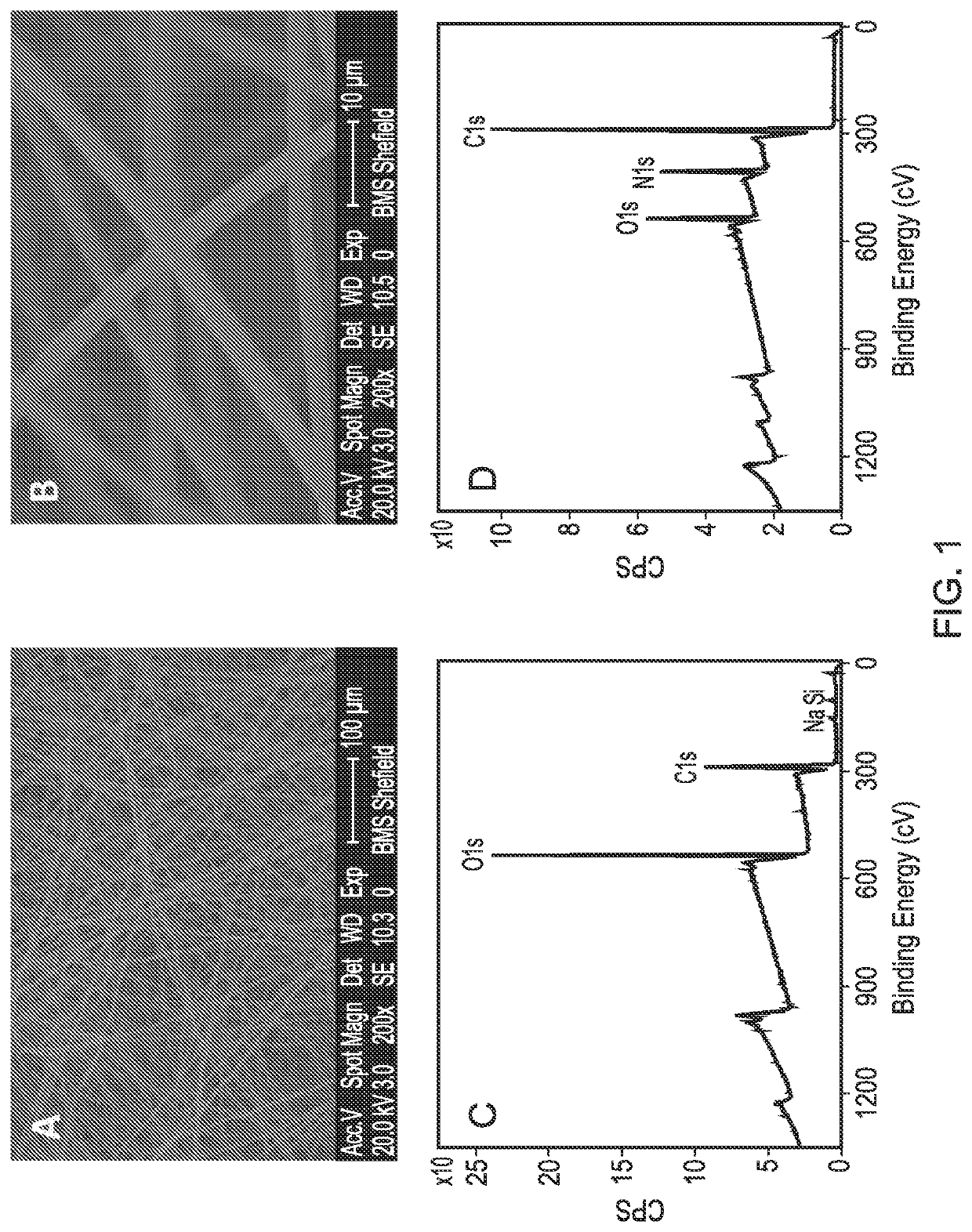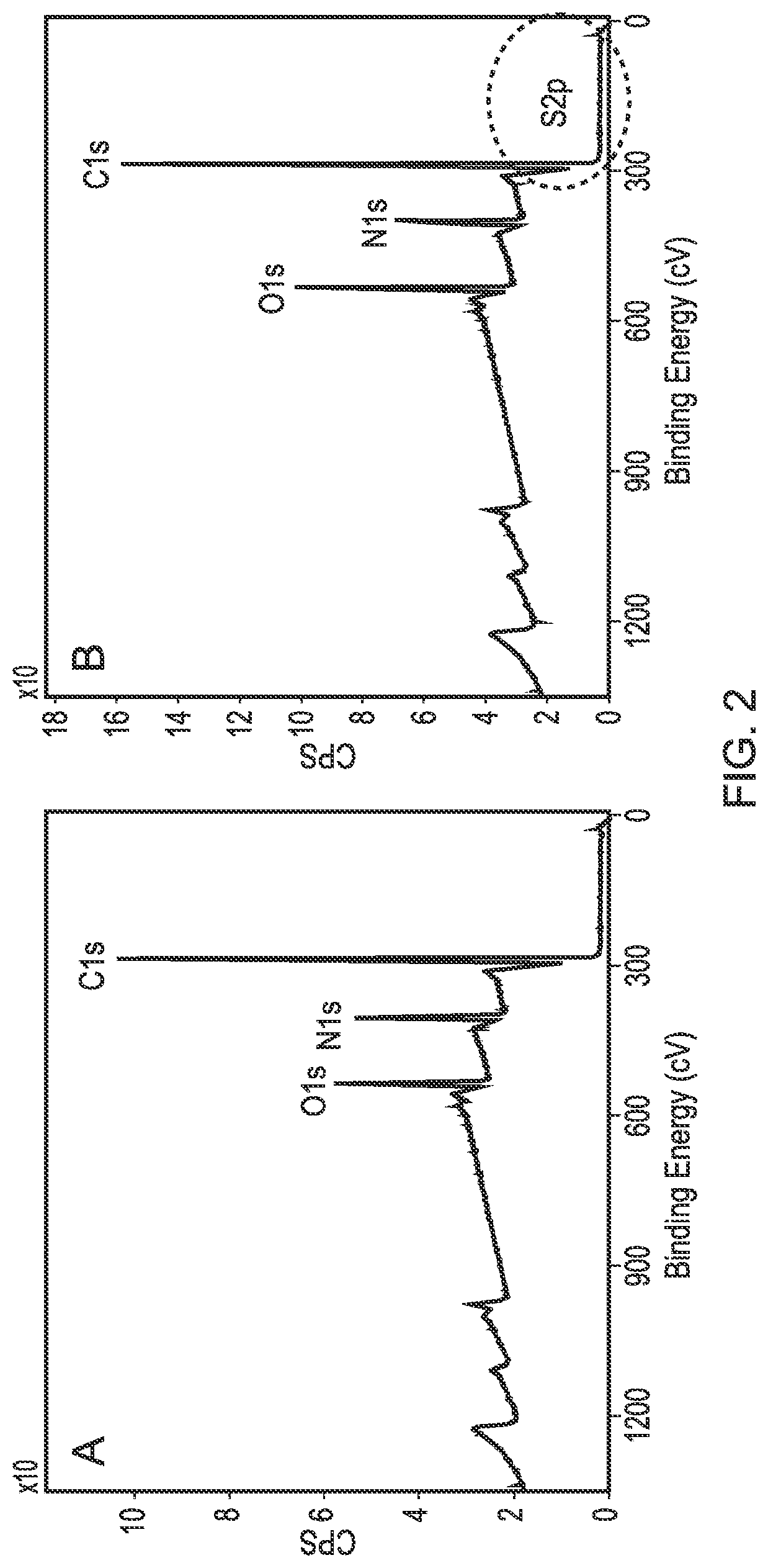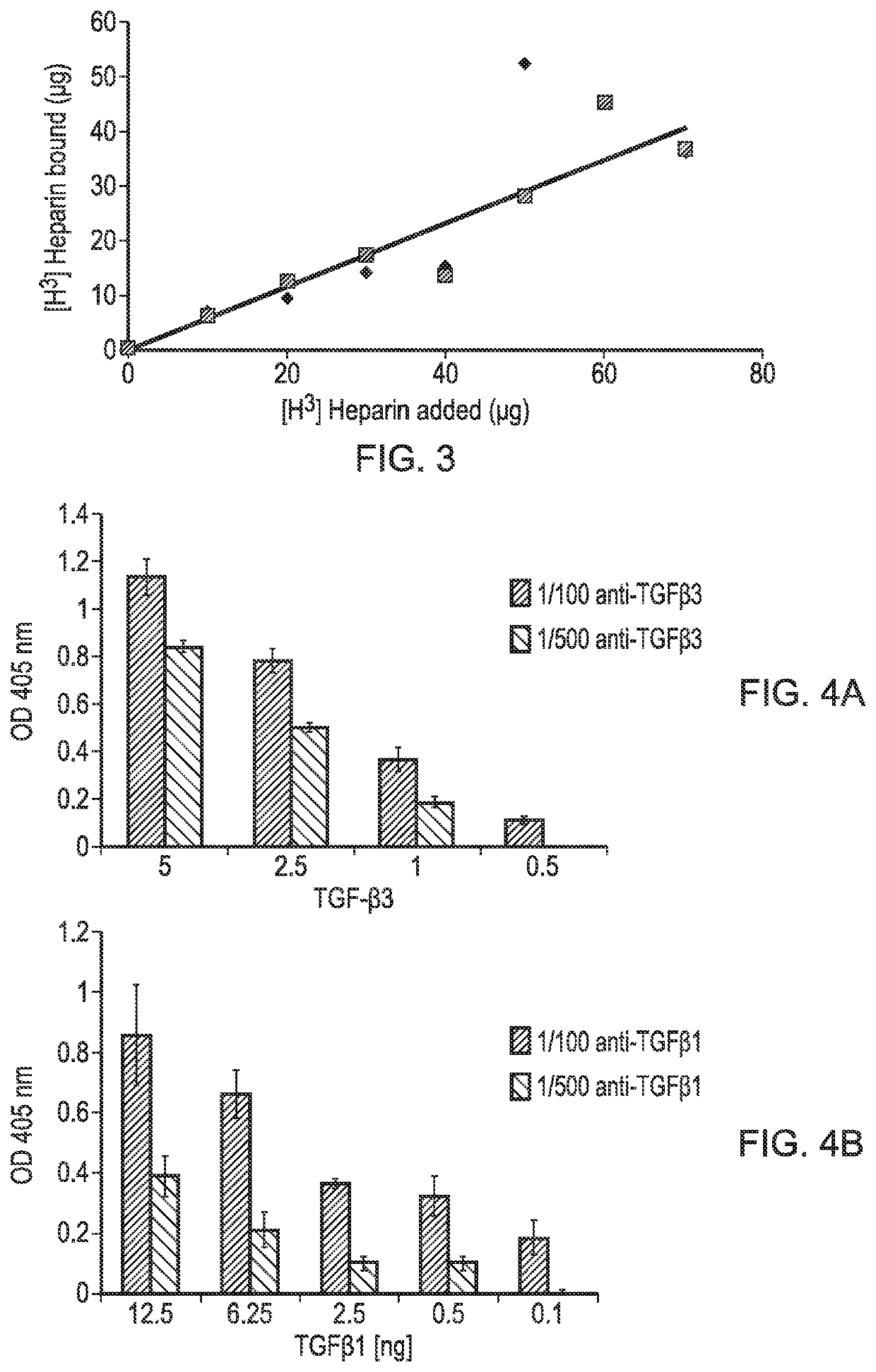Medical implant
a technology of medical implants and implants, applied in the field of medical implants, can solve the problems of not providing the individual with the full range of natural movement, damage to skeletal tissues, and damage to skeletal tissues, and achieve the effects of stimulating stem cell homing, promoting tissue formation, and promoting regeneration of articular cartilag
- Summary
- Abstract
- Description
- Claims
- Application Information
AI Technical Summary
Benefits of technology
Problems solved by technology
Method used
Image
Examples
example 1
[0101]A PLLA scaffold was subjected to cold plasma treatment with allylamine as hereinbefore described and a coating of allylamine was confirmed by the presence of a nitrogen peak (FIG. 1D). FIG. 2B shows the X-ray photon spectroscopy image of the heparin-treated, allylamine coated PLLA scaffold. The small peak occurring at 168.1ev shows the presence of sulphur groups confirming binding of heparin to the allylamine-treated PLLA. FIG. 3 shows a linear relationship of the amount of [H3]-radiolabelled heparin bound to the allylamine-treated scaffold vs the amount added The scaffold thus provides a positive surface coating of allylamine to which heparin binds non-covalently. Once the heparin has bound further experiments were conducted to show that heparin-binding bioactive factors such as for example TGFβ1, TGFβ3 and CXCl12 applied singularly or in combination will bind directly to the heparin layer by a tight non-covalent interaction. FIG. 4 shows the binding of TGFβ1 and TGFβ3 to an ...
example 2
[0102]FIG. 5 shows the binding of several example heparin-binding bioactive factors to various allylamine and glycosaminoglycan functionalised surface. The results show the means+ / −standard error of the mean. We have demonstrated that TGFβ3 and TGFβ1, CXCL12, SDF1β, MIA, Wnt 3a and BMP2 bind to a selection of oligosaccharides directly. MIA is considered to bind to heparin via binding to fibronectin which will bind to heparin41. Here we have shown that MIA will bind directly to immobilised sulphated oligosaccharides as well as via binding to sulphated oligosaccharides via binding to fibronectin which then binds to the oligosaccharides. There are literature reports which state that TGFβ3 does not bind to sulphated oligosaccharides56,58. However, we have clearly demonstrated that TGFβ3 does bind directly to various sulphated glycosaminoglycans.
[0103]Binding of bioactive factors (BFs) which bind to GAG-binding proteins such as fibronectin or laminin, can be bound to the oligosaccharide-...
example 3
[0104]Studies were undertaken with bovine synovial fluid mesenchymal stem cells (SF-MSCs) or chondrocytes to investigate the attachment of the cells to an example of PLLA scaffolds functionalised with an example chondrogenic BF. Results for the SF-MSCs are shown in FIG. 6 and results for chondrocytes in FIG. 7. Cells were seeded onto the scaffolds as described herewithin and 48 hr after seeding the cell-scaffold constructs were fixed and examined by scanning electron microscopy. FIGS. 6 and 7 show scanning electron micrographs of SF-MSCs and chondrocytes attached to PLLA. (FIGSS. 6A 7A) and PLLA scaffolds functionalised with allylamine (FIGS. 6B and 7B), heparin (FIGS. 6C and 7C) and TGFβ3 (FIGS. 6D and 7D). For both cell types, TGFβ3-functionalised PLLA scaffolds showed a greater density of cells bound than allylamine or heparin functionalised PLLA scaffolds or unmodified PLLA. In summary, this data shows that MScs and chondrocytes can attach to PLLA scaffolds in higher cell densit...
PUM
| Property | Measurement | Unit |
|---|---|---|
| body temperature | aaaaa | aaaaa |
| depth | aaaaa | aaaaa |
| depth | aaaaa | aaaaa |
Abstract
Description
Claims
Application Information
 Login to View More
Login to View More - R&D
- Intellectual Property
- Life Sciences
- Materials
- Tech Scout
- Unparalleled Data Quality
- Higher Quality Content
- 60% Fewer Hallucinations
Browse by: Latest US Patents, China's latest patents, Technical Efficacy Thesaurus, Application Domain, Technology Topic, Popular Technical Reports.
© 2025 PatSnap. All rights reserved.Legal|Privacy policy|Modern Slavery Act Transparency Statement|Sitemap|About US| Contact US: help@patsnap.com



